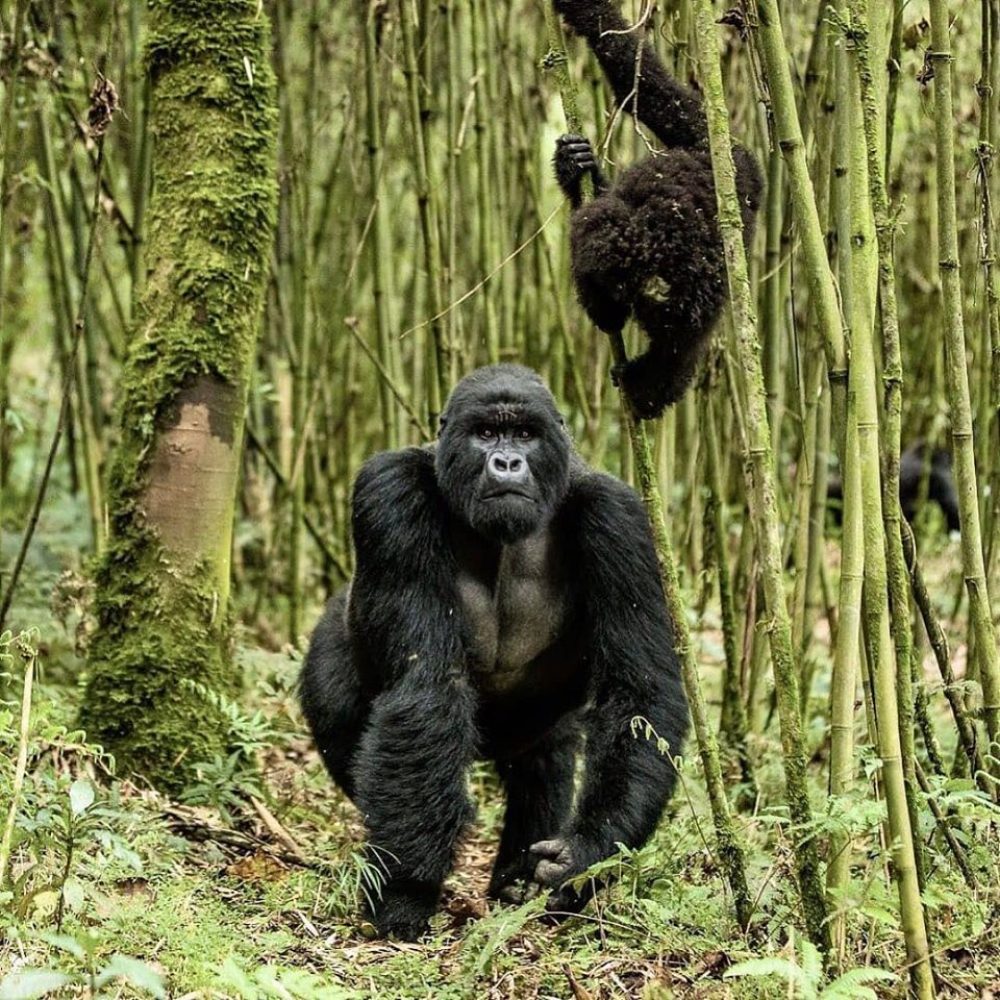
Also referred to as Coracias abyssinicus, the Abyssinian roller is a notable Uganda safari tour bird species belonging to the roller family that breeds across the tropical belt in Sub-Saharan Africa.
The Abyssinian Roller is a medium sized bird stretching from 28 – 30cm marked with a brown back and blue plumage on the rest of the body. The Adult Abyssinian ground roller feature 12cm tail ribbons and the two sexes are similar as viewed on birding safaris in Uganda.
The rollers majorly perch on trees, overhead wires or posts looking out for gigantic insects along with small rodents to feed. In case of forest fire, they take advantage of the disturbed invertebrates. The diet includes; grasshoppers, crickets, caterpillars and beetles along with alate termites. The Abyssinian rollers are notably fearless and would dive and roll at intruders including humans while displaying its turns and twists forming the background for its naming. The Abyssinian roller nests in tree hole or building and lays a range of three (3) to six (6) eggs.
Besides the tropical belt of Sub Sahara Africa, Abyssinian roller thrives in the outside world including western Yemen and South western Saudi Arabia. It is common in warm open country areas with some trees and have adapted to farmland and the human settlement.
The Abyssinian roller is listed as species of least concern under the IUCN red list. In Uganda, this bird species can be explored in Kidepo Valley National Park while on Uganda birding safari and this can be done by purchasing an all inclusive package or by arranging private travel using the self drive car rental services in Uganda.

 The Papyrus gonolek also referred to as Laniarius mufumbiri belongs to family Malaconotidae and thrives in the destinations of Democratic Republic of Congo, Burundi, Rwanda, Tanzania Kenya and Uganda where it is explored on Africa birding safaris including
The Papyrus gonolek also referred to as Laniarius mufumbiri belongs to family Malaconotidae and thrives in the destinations of Democratic Republic of Congo, Burundi, Rwanda, Tanzania Kenya and Uganda where it is explored on Africa birding safaris including  Nestled on the shores of Lake Victoria Africa’s largest lake and one of the popular
Nestled on the shores of Lake Victoria Africa’s largest lake and one of the popular  The little bee-eater also referred to as the Merops pusillus is one of the unique bird species sought after on
The little bee-eater also referred to as the Merops pusillus is one of the unique bird species sought after on  The Local government of Lango along with the private sector have appreciated tourism including
The Local government of Lango along with the private sector have appreciated tourism including  The Black and White Colobus Monkeys are descendants of Old World Monkeys belonging to the Colobus genus native to the continental lands of Africa where they are explored on
The Black and White Colobus Monkeys are descendants of Old World Monkeys belonging to the Colobus genus native to the continental lands of Africa where they are explored on  The destination Uganda aims at increasing the travelers that take up
The destination Uganda aims at increasing the travelers that take up  The Ugandan Government and the Kingdom of Bahrain have reached consensus to rejuvenate national carrier ( Gulf Air ) flights to Entebbe International Airport with the aim of enhancing travel between the two countries including transporting the
The Ugandan Government and the Kingdom of Bahrain have reached consensus to rejuvenate national carrier ( Gulf Air ) flights to Entebbe International Airport with the aim of enhancing travel between the two countries including transporting the  Mabamba Wetland is one of the popular
Mabamba Wetland is one of the popular 